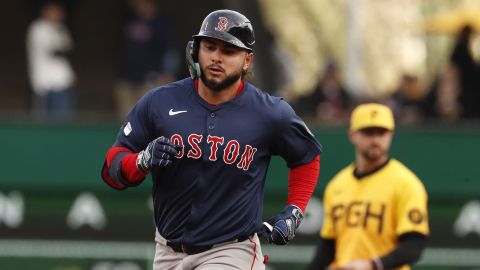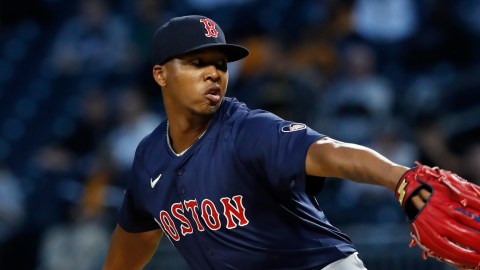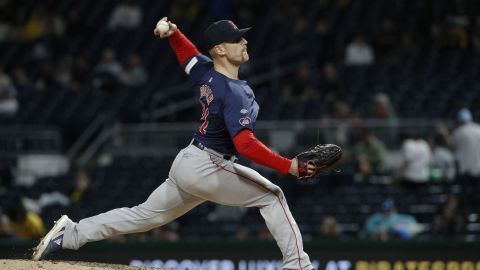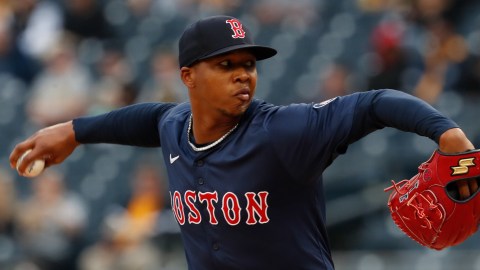The final days of the hot stove season appear to be focused entirely on Johnny Damon’s eventual landing spot, but another big name free-agent outfielder has slipped completely under the radar.
Former White Sox Jermaine Dye is the only American League outfielder to bash at least 27 homers in each of the past five seasons. Although his batting averages have jumped and slipped — ranging from .251 to .315 over that span — his power has never wavered. And throughout his career, the right-handed hitting Dye has been a force against southpaw pitchers.
Yet, because of a dreadful 212 at-bat stretch during the second half of the 2009 campaign, every general manager in the majors seems to have soured on the two-time All-Star.
Prior to last season, Dye was viewed as one of the gems in a lowly class of free-agent hitters set to hit the market. In 2009, the 36-year-old hit .302 with 20 homers and logged a .942 OPS before the All-Star break, giving the impression that he was on his way to a brilliant contract year and might even overshadow the then-slumping Matt Holliday come winter.
Times have changed.
After joining the Cardinals in a mid-July trade, Holliday went on a .357 AVG/.420 OBP/.628 SLG tear, re-emerging as one of baseball’s most feared hitters. Dye, meanwhile, sank into one of the deepest slumps of his career, batting just .179 with a .590 OPS during the summer.
Not surprisingly, Holliday was rewarded with the most lucrative deal of the winter — a seven-year, $120 million hitch that will keep him in St. Louis through his age-35 season. Dye, on the other hand, continues to wait for someone to gamble on his ability to bounce back.
Judging a hitter based on a 60-game stretch is imprudent, because using that small sample size magnifies the highs and lows that all baseball players endure. If Holliday had started hot and finished cold while Dye enjoyed a torrid second half, their respective landscapes might have been much different this winter. But timing is everything in the unforgiving business of baseball, and Dye’s was downright disastrous.
Still, it’s worth noting that in spite of Dye’s apparent collapse, he finished the season with an overall .250 AVG/.340 OBP/.453 SLG line and 27 home runs. Moreover, he retained the ability to destroy left-handed pitchers, posting a .292 AVG/.382 OBP/.508 SLG line against them. With that in mind, it’s surprising that a team hasn’t been persuaded to take a chance on Dye as a platoon option yet.
As spring training draws near, Dye figures to be frantically searching for a new home, and he could make sense for the Red Sox at a reduced cost. According to Cot's Contracts, the Red Sox currently have $165.8 million committed in payroll for the 2010 roster, leaving them with a bit of wiggle room under the $170 million luxury tax. But owner John Henry stated earlier this winter that the team will be over the threshold, meaning they'll have to pay a 22.5 percent tax on every penny spent above $170 million.
The Red Sox project to start left-handed hitters in left field (Jacoby Ellsbury), right field (J.D. Drew) and designated hitter (David Ortiz), yet their fourth outfielder (Jeremy Hermida) is also a lefty batter. All four of them have had their fair share of struggles against tough southpaw pitchers, and two are considerable injury risks, so playing time for Dye should not be especially hard for Terry Francona to find – especially if Epstein is able to make a trade involving Mike Lowell this spring.
Dye’s lumbering 6-foot-5, 245-pound body is no longer fit for everyday duties in the outfield, but the Red Sox certainly are no strangers to masking defensive shortcomings with the Green Monster. Since Dye wouldn’t play left regularly except in the event of an injury, his lack of range shouldn’t have too much of an adverse effect on the team’s vastly improved fielding efficiency.
If Dye is willing to settle for a one-year deal worth no more than $3-4 million, the potential downside of adding him to the Red Sox bench is minimal — aside from a luxury tax hit. If Dye’s second-half skid was an aberration and he is able to mash lefties and hit homers in Boston, the reward could be great.



